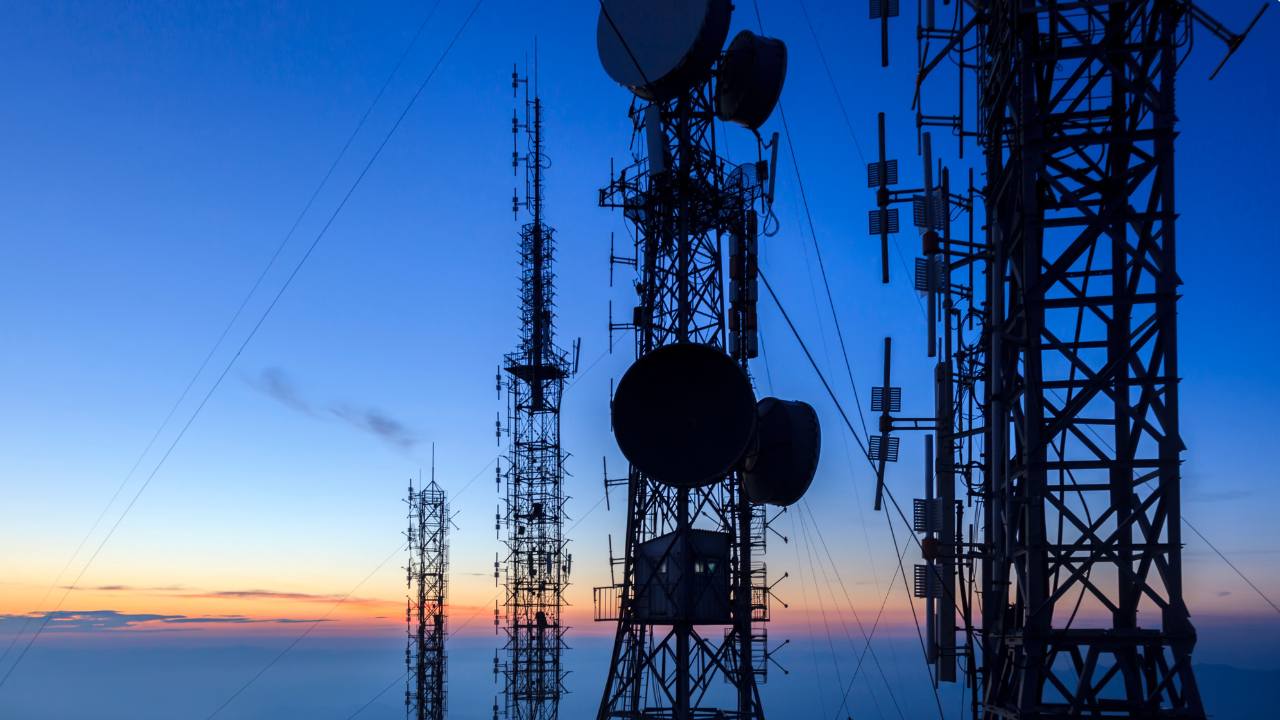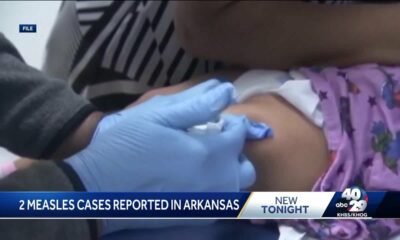Kaiser Health News
An Arm and a Leg: Credit Card, Please

by Dan Weissmann
Mon, 03 Jul 2023 09:00:00 +0000
A listener’s doctor asked her for a credit card before she’d even had her first appointment. That didn’t sit right with her. She wanted to know: Can they do that?
In this episode of “An Arm and a Leg,” host Dan Weissmann speaks with experts about the risks of handing over a credit card to your medical provider and what you can do if you’re put in that position.
Weissmann also speaks with Elisabeth Rosenthal, senior contributing editor at KFF Health News, about the growing industry of banks and private equity profiting from medical debt.
Will the federal Consumer Financial Protection Bureau take action against this growing industry?
Dan Weissmann
Host and producer of “An Arm and a Leg.” Previously, Dan was a staff reporter for Marketplace and Chicago’s WBEZ. His work also appears on All Things Considered, Marketplace, the BBC, 99 Percent Invisible, and Reveal, from the Center for Investigative Reporting.
Credits
Emily Pisacreta
Producer
Adam Raymonda
Audio Wizard
Afi Yellow-Duke
Editor
Click to open the Transcript
Transcript: Credit Card, Please
Note: “An Arm and a Leg” uses speech-recognition software to generate transcripts, which may contain errors. Please use the transcript as a tool but check the corresponding audio before quoting the podcast.
Dan: Hey there–
A listener named Lynn got in touch after she signed up for a dermatology appointment.
When we talked, the story came rushing out.
Lynn M: I don’t go to doctors at all, but I’m getting old and getting so many marks on my body and I’ve lived in Arizona for 47 years, so I better go to skin check.
Dan: Sure. She was a new patient, so there were forms.
And one of the forms says: Oh, yeah, we’re gonna need you to put a credit card on file with us. Lynn reads it to me
Lynn M: Well it says, uh, “committed to providing you with exceptional patient care. We endeavor to make our billing processes simple as efficient…,” yabbity yabbita.
Dan: Yeah, it says: We’ll run your insurance, and whatever they say is your responsibility, we’ll just charge it to your card. Easy-peasy. We’ll never even send you a bill! Your insurance company will send you a note about how the claim got resolved — and, you know, how much we’ve charged you. You think there’s a problem? Call your insurance company.
Lynn M: I said, I’m not giving you this. I don’t want anything run through on my card that I haven’t checked out.
Dan: Yep! I mean, Lynn listens to this show. She had at least a couple of months before her appointment to figure out what to do — note to self, dermatologists get booked up in advance — and she wondered if we had any advice.
And I wondered, as I’ve wondered before: Can they freaking DO that?!? Can they make you put a credit card down before they even see you?
I mean, in this case, it sounded like they’re asking for a blank check.
And what if you’re not just going in for a skin check? If you’ve got a major medical need — like, you need surgery, maybe right now, maybe your appendix is bursting– can they basically hold you for ransom?
You probably already know: People DO get asked for that kind of payment upfront.
And if you don’t have what — let’s just call the ransom amount– on you, maybe they’ll arrange for somebody to “lend” it to you– maybe on terms that have have some dangerous looking fine print, which you may not be in a position to evaluate…
I’m gonna tell you: We go some dark places in this episode, but the news isn’t all bad
This is An Arm and a Leg, a show about why health care costs so freaking much, and what we can maybe do about it. I’m Dan Weissmann. I’m a reporter, and I like a challenge. So our job on this show is to take one of the most enraging, terrifying, depressing parts of American life, and bring you something entertaining, empowering, and useful.
So, let’s start with the case of: The dermatology office, or whoever, wants a credit card to keep on file.
One thing is perfectly clear: They can ask. This kind of thing comes up. And here’s one response I really like:
Teresa Murray: There’s not a chance in God’s green earth that I would leave a credit card or a debit card with a doctor’s office or a dentist’s office. Are you actually kidding me?
*Dan laughs*
Dan: That is Teresa Murray. She encountered this question in 2013, when she was a professional advice-giver — in her role as personal finance columnist for the Cleveland Plain Dealer. A reader wrote in–they’d been asked to leave a credit card on file.
Teresa wrote in her column that the chances she personally would comply were a big, fat hairy zero. She says she’s even firmer in that opinion today.
Teresa Murray: I mean, you’re not gonna give anybody a blank check like that. You don’t go to the grocery store and give ’em your credit card or your debit card up front. It’s like you go through the checkout and then you pay and it’s like, oh, hey, the apples were on sale and it didn’t ring up right? And you can flag things before it actually goes through.
Dan: There’s an exception these days, right? I dunno if you’ve seen this in Cleveland yet, but there’s one a couple miles from me. Uh, Amazon is setting up grocery stores and they’re like, “Oh yeah, skip the checkout. We’ve got your credit card. We know what you took.”
Teresa Murray: Yeah. Well, I mean, you know, if that, if that’s how you roll, then that’s fine. But the problem with the doctor’s office or, a dentist’s office, or God forbid, a hospital, is, you get charged and you don’t even know what all this stuff is. You don’t have that opportunity to say, wait a minute, this isn’t right. You probably don’t, can’t read their codes anyway, and they may start trying to charge you for things that were not allowed by your insurance and that you didn’t authorize and it’s just a hot mess.
Dan: I tell Teresa, yeah: Former ProPublica reporter Marshall Allen wrote a book about fighting medical bills and the TITLE OF THE BOOK was “Never Pay the First Bill.”
Because errors come up all the time. Depending on whose studies or estimates you’re listening to, it could be ten percent, or forty nine percent, or eighty percent.
I mean, if I thought the chances were even one in ten that the apples weren’t going to ring up right — and that they’d ring up at hundreds of dollars apiece– that doesn’t seem like a bet I’d want to make.
Teresa Murray: Why would you say, well, you know, if something goes wrong, I can just sort it out. Okay, well, who has time for that? Who has time to spend with disputing charges? Who has time for that kind of mess?
Dan: Yeah, not me. But this sort of thing DEFINITELY comes up. After Teresa published that reader’s letter and her response about the big, fat hairy zero, more than a hundred and twenty readers wrote in about similar experiences.
Teresa’s bottom line didn’t change.
Teresa Murray: If anybody were to ever ask me, Hey, we need to have your credit card or debit card on file. I’d be like, no dude, you don’t need my business.
Dan: But. What if you don’t have that many other options? Not everybody lives in a big city where there are a lot of doctors.
Teresa had an answer for that back in 2013. A prepaid debit card. She has a couple.
Teresa Murray: Like one of ’em has $9 on it, so that’s the one that we use when we wanna reserve a hotel room, or like, you know, you go to play pool and they want you to leave a, a credit card, you know, so you don’t steal the balls and the cue stick and stuff.
Dan: And that’s what she’d give a doctor’s office, if they insisted they had to keep something on file.
By the way, Teresa Murray isn’t at the Cleveland Plain Dealer anymore. These days she’s a consumer watchdog for a non-profit called PIRG: The Public Interest Research Group.
She says that means she’s still educating consumers on our rights. And pushing directly on governments and corporations, as she puts it, to act right.
Teresa Murray: I oftentimes tell people that I bang pots and pans, you know, when things go wrong, I bang pots and pans. It’s like, wait a minute, this is not how it’s supposed to be.
Dan: PIRG did a lot of work lobbying for the No Surprises Act, which made a lot of surprise medical bills illegal starting last year. I think I’m a fan.
And our listener Lynn says that so far, she seems to have found a simple work-around: She just called and asked if she really HAD to sign over a credit card.
Lynn M: I said, “Will the doctor still treat me if I don’t sign this?” And they said, “Yes, they will.”
Dan: Lynn says they told her: That’s just for “ease of payment”
Lynn M: They made it sound like it was for ease for me. You know, to make my life easier.
Dan: So, she told them, “No thanks.”
And all of this is great, but: What if you’re not booking a dermatology appointment three months out? What if you need surgery? That’s right after this:
This episode of An Arm and a Leg is produced in partnership with KFF Health News– that’s a nonprofit newsroom covering health care in America. Their work is terrific, and I am so pleased to work with them. We’ll have a little more information about KFF Health News at the end of this episode.
So, providers asking for payment upfront has become pretty common. And if you’re wondering what could possibly go wrong, here’s Noah Neilsen. He works for the National Weather Service, part of a bigger federal agency that makes it fun for him to introduce himself.
Noah Nielsen: So my name is Noah and I work for NOAA, which is the National Ocean and Atmospheric Administration.
Dan: I love that you say, I’m Noah and I work for NOAA. That’s excellent. that must happen at parties a lot.
Noah Nielsen: A lot. A lot.
Dan: Noah needed hernia surgery last year. He got a call ahead of time from a financial counselor, who said they were gonna estimate what his share would be, after insurance. And when he came in for surgery, they asked him for… 585 dollars. Which he paid.
Noah Nielsen: They gave me a tiny little gas station receipt
Dan: And a few weeks later, he got his insurance statement, which said Noah’s share was… 225 dollars. He had overpaid by three hundred sixty dollars.
He wasn’t worried… at first. He gave the folks at the surgery center a few weeks, eventually called and said, “Hey, I think you owe me some money.”
Noah Nielsen: And the first thing that they told me was, “Well, we actually don’t have the payment from your insurance company.” And I thought, well that’s, that’s kind of weird.
Dan: Because his insurance statement said, “We’ve paid our share of this.” Noah’s patient. He gave it a few more weeks, then started calling the billing office again.
Noah Nielsen: And asked repeatedly, “Can you escalate this?”
Dan: And again.
Noah Nielsen: “Can I talk to a supervisor?”
Dan: And– sorry, this part may be triggering — again.
Noah Nielsen: They won’t let you talk to a supervisor. They just say that they’ll, um, put in a ticket for someone to call you back.
No one ever, ever, ever called me back.
Dan: Eventually, he called his insurance company to make sure they’d paid, they were like, “We totally did.” He got someone from the insurance company to call the billing office while he sat in, like a three way call. The billing office was like,
Noah Nielsen: “Okay, well we’re going to investigate this. Um, we’re gonna track it down.”
Dan: But apparently they didn’t. After another few weeks, Noah was, as he puts it, blowing everyone up.
The billing people. The desk staff at the clinic. And eventually, the state attorney general.
Noah Nielsen: We have a really good attorney general who, you know, if you were sending a complaint about any type of business, they reach out to the lawyers on their side to get them to respond.
Dan: And Noah let everybody on the other side know: You’ll be hearing from the state AG’s office soon.
And hey presto! They found the money, and they gave him a refund.
I mean, on the one side, this is a great success story: Noah got the problem solved, with help from that state AG’s office.
But those folks kept his money for five months. He estimates he called the billing office at least 10 times. Another four or five calls to his insurance company. Another few calls to the clinic itself.
And Noah happens to live in a state — Washington –where the AG’s office is available for this kind of thing. And he knew it.
And Noah thinks his job experience gives him a leg up. Because, you know what he does for the National Weather Service? He manages contracts.
Noah Nielsen: I’m all about, terms and conditions. You know, someone, submits a payment. Someone submits an invoice, if there’s money left over, you have to refund that back. So just knowing, like, the laws and how they generally work, I think really helped me out.
Dan: He does have a big regret: Not paying more attention to online reviews for that surgery center. Because he did look ahead of time:
Noah Nielsen: There were so many people complaining about this process that they had to prepay to, you know, get their surgery and a lot of people had the same issue that it took forever to get the refund. And I read that and I thought, oh, that’s not gonna happen to me. I, I, my insurance is pretty good.
Dan: Ouch. Yeah. So that’s a lesson: Good insurance by itself doesn’t do the job if we’ve already handed over our money.
And I’ve actually got another lesson — a much brighter spot. Something that COULD really help.
But first, let’s go someplace really dark. Because sometimes, if you’re asked to pay upfront, the amount might not be the kind of money you can actually cough up.
Lots of people have deductibles –amounts we have to pay before our insurance kicks in– in the thousands of dollars. And not everybody has thousands of dollars just lying around.
So, one thing that’s more and more common is: Providers aren’t just asking for your credit card information. They’re offering you credit cards and financing plans — lines of credit just to pay for medical care. And the terms can be pretty rough.
Elisabeth Rosenthal: Yeah, it’s evil.
Dan: That’s Elisabeth Rosenthal, senior contributing editor for our pals at KFF Health News.
Elisabeth Rosenthal: You know, this is a relatively young, new industry that developed pretty much from whole cloth in the last five years to exploit sick people.
Dan: She has been watching it grow.
Elisabeth Rosenthal: We had done a story maybe five years ago about representatives from a credit card company being in an emergency room and offering patients card or loans there. And, you know, we wrote a story about it, as if it were an outlier. Like, isn’t this crazy?
Dan: And yes, actually, that is pretty crazy– hocking you for a credit card while you’re in the ER!
Except… maybe no longer so unusual. Last year, KFF did a huge series about medical debt in America. Spoiler alert, there’s a LOT of medical debt in America, holy crap. You almost don’t wanna know.
And one of the big pieces of news in it was: These medical credit cards and financing plans had exploded since 2017.
Elisabeth Rosenthal: What then seemed to be like, oh, isn’t this a quirky, weird story? It’s just now spread everywhere. Debt is not a weird, unusual byproduct. It’s a core business of American healthcare.
Dan: Huge. The Consumer Financial Protection Bureau, the feds, did a report on it last month. It said that one of the big players, Care Credit, is accepted at more than a quarter-million locations.
And one thing that hasn’t changed: The place where you’re most likely to get an offer is the doctor’s office, or the hospital where you’re being seen.
Elisabeth Rosenthal says more hospitals used to offer no-interest payment plans in-house. Which was a lot of work. And not a moneymaker. So…
Elisabeth Rosenthal: Companies came to them and said, hey, we’ll take this nasty business off your hands. You don’t wanna be dealing with patients who can’t pay their bills. We’ll set up these credit cards. And, you know, the hospitals are just happy to kind of outsource this ugly business.
Dan: One interesting thing in that federal report: Hospitals seem to actually pay a fee to the financing companies; so it really does seem like they’re just trying to outsource a job they don’t wanna do.
Meanwhile, the financing companies are raking it in. The feds say the average interest rate on medical credit cards and financing plans is 27 percent.
Which not only sounds like a lot, it’s a lot even for credit cards: The feds say the average rate for regular credit cards is 16 percent. Which is a LOT. And this is a lot more.
EXCEPT: That’s not the number you see upfront. What you see up front is no interest for 6 months… or 12… or 18.
Somewhere in the fine print, if you can decipher it, is the bad news:
Elisabeth Rosenthal: It’s not zero interest, it may be zero interest as a teaser
Dan: But, if the balance isn’t paid in full before that no-interest period runs out… they’ll hit you with back interest on the full original amount.
So, the bill was a thousand bucks, and you’ve only got a hundred bucks left to pay? Oops! Let’s tack another 270 on there. And chop-chop– we’re gonna charge you interest on the interest too.
Elisabeth Rosenthal: And then, you know, you’re in a sand trap that you’re never gonna get out of.
Dan: It’s a big business. Synchrony Financial, which owns CareCredit, is a publicly traded company valued at 14 billion dollars. If you’re a capitalist, this kind of outfit does sound like a good investment.
Elisabeth Rosenthal: Their profit margins, top 29%. And I don’t blame them in the sense that they’re set up to offer people credit and make money doing it. Right. That’s why they exist. Now, should they be allowed to sell their wares in hospital emergency rooms? I don’t think that’s right. You know, that’s my opinion.
Dan: I’m not gonna argue.
And the feds seem inclined to agree. One of their findings:
Quote: Many people who sign up for medical financing in doctor’s offices and hospitals may otherwise be eligible to receive financial assistance or charity care that medical providers may offer or otherwise be required to offer under federal, state, or local law. Unquote.
Argh.
The feds also found that — big surprise– the super-high interest and the teaser rates often caught people by surprise, weren’t well-explained.
Which sounds a LOT like something the feds have actually stepped in and done something about before.
Ten years ago, the same federal agency issuing this report, the CFPB, ordered one of these exact companies, CareCredit, to refund 34 million dollars to folks it had taken in through deceptive marketing.
I asked the CFPB if, now that the industry is so much bigger, they might step in again. They said, no comment.
CareCredit did send us a statement that said: “Protecting consumers is of paramount importance and we are committed to continue to educate all stakeholders about the fair and transparent way we offer our products.”
And their website — if you look in the right places– does explain things like “deferred interest.” OK then.
One final word from Elisabeth Rosenthal on all that, and then, I’ve got what I think is some good news for you.
Elisabeth Rosenthal: As a country, we have to decide, is this something we want to allow to exist without regulation and without guardrails? And that’s why I’m glad the CFPB is stepping in to start looking at this at least. Um, but I think there’s a long way to go.
Dan: So, yeah. They’ve issued a new report, but no enforcement action yet. Like she says, that’s “a long way to go.” And it all sounds like some dark stuff.
But here’s what else…
First, well: If anybody tries to offer you one of those medical credit cards or financing plans, NOW YOU KNOW. And you can spread the word. Teaser rates. 27 percent interest, back-dated. Elisabeth Rosenthal called them evil. Let people know.
Second, to come back to the big question we started with: Can a doctor or a hospital MAKE you pay them upfront? Even if it means taking out some possibly-evil medical credit card?
Because the answer seems to be: Not always. Specifically, not if you’ve got insurance. And not if they’re in your insurance network.
I called my number-one insurance nerd, Louise Norris. She’s a health policy analyst for health insurance dot org. She was packing to go on vacation– everybody deserves a vacation– so she responded by email, and she said:
Commercial insurance contracts generally prohibit providers from requiring payment upfront, except for the kind of co-pays that are spelled out in your insurance documents, like 30 bucks for an office visit.
Which, she said, doesn’t mean providers can’t ASK, or even RECOMMEND that you pay upfront, maybe fork over your whole deductible.
But generally they can’t MAKE you.
Now she said generally — it’s a big country, a lot of murky stuff out there. But if a hospital or a doc says they want payment upfront, You can try just saying, “No. I’d like you to bill me once insurance has figured out their part.”
And once I learned that, it put a personal experience into perspective. I’ve got a congenital heart condition, it doesn’t affect me, knock-wood, but I need it checked every year. The tests are expensive, so we carry good insurance, BUT
One time a few years ago, they said, “Hey, your share’s going to be this-many-hundreds-of-dollars. Can we get that upfront?”
And I was like, “Ugh, yeah, ok, fine.” I mean, I was there. And guess what? In the end, they were wrong. My share was a couple hundred dollars less than they got from me.
Getting my money back didn’t take me as much work as it took Noah from NOAA, but I got super-mad about the whole thing anyway.
So next time they asked me to pay upfront, I just said, “Can you just bill me after the insurance figures out my share?” And they said, “OK.”
So, let’s recap:
Can they make you pay upfront? They can ASK. They may offer to “make it easy for you” with medical credit cards and financing plans that Elisabeth Rosenthal calls “evil.”
But if they are in your insurance network, they probably can’t MAKE you… Probably. And at least sometimes, you can just tell them, “I’d rather not.” Me, I’ve heard worse news.
I’ll catch you in a few weeks. Till then, take care of yourself.
This episode of An Arm and a Leg was produced by me, Dan Weissmann, with help from Emily Pisacreta and Bella Cjazkowski, and edited by Ellen Weiss.
Daisy Rosario is our consulting managing producer. Adam Raymonda is our audio wizard. Our music is by Dave Winer and Blue Dot Sessions.
Gabrielle Healy is our managing editor for audience. She edits the First Aid Kit Newsletter.
Bea Bosco is our consulting director of operations. Sarah Ballema is our operations manager.
An Arm and a Leg is produced in partnership with KFF Health News–formerly known as Kaiser Health News.
That’s a national newsroom producing in-depth journalism about health care in America, and a core program at KFF — an independent source of health policy research, polling, and journalism.
And yes, you did hear the name Kaiser in there, and no: KFF isn’t affiliated with the health care giant Kaiser Permanente. You can learn more about KFF Health News at arm and a leg show dot com, slash KFF.
Zach Dyer is senior audio producer at KFF Health News. He is editorial liaison to this show.
Thanks to Public Narrative — That’s a Chicago-based group that helps journalists and nonprofits tell better stories– for serving as our fiscal sponsor, allowing us to accept tax-exempt donations. You can learn more about Public Narrative at www dot public narrative dot org.
And thanks to everybody who supports this show financially.
If you haven’t yet, we’d love for you to join us. The place for that is arm and a leg show dot com, slash support.
Thank you!
“An Arm and a Leg” is a co-production of KFF Health News and Public Road Productions.
To keep in touch with “An Arm and a Leg,” subscribe to the newsletter. You can also follow the show on Facebook and Twitter. And if you’ve got stories to tell about the health care system, the producers would love to hear from you.
To hear all KFF Health News podcasts, click here.
And subscribe to “An Arm and a Leg” on Spotify, Apple Podcasts, Stitcher, Pocket Casts, or wherever you listen to podcasts.
By: Dan Weissmann
Title: An Arm and a Leg: Credit Card, Please
Sourced From: kffhealthnews.org/news/podcast/credit-card-please/
Published Date: Mon, 03 Jul 2023 09:00:00 +0000
Did you miss our previous article…
https://www.biloxinewsevents.com/need-to-get-plan-b-or-an-hiv-test-online-facebook-may-know-about-it/
Kaiser Health News
US Judge Names Receiver To Take Over California Prisons’ Mental Health Program

SACRAMENTO, Calif. — A judge has initiated a federal court takeover of California’s troubled prison mental health system by naming the former head of the Federal Bureau of Prisons to serve as receiver, giving her four months to craft a plan to provide adequate care for tens of thousands of prisoners with serious mental illness.
Senior U.S. District Judge Kimberly Mueller issued her order March 19, identifying Colette Peters as the nominated receiver. Peters, who was Oregon’s first female corrections director and known as a reformer, ran the scandal-plagued federal prison system for 30 months until President Donald Trump took office in January. During her tenure, she closed a women’s prison in Dublin, east of Oakland, that had become known as the “rape club.”
Michael Bien, who represents prisoners with mental illness in the long-running prison lawsuit, said Peters is a good choice. Bien said Peters’ time in Oregon and Washington, D.C., showed that she “kind of buys into the fact that there are things we can do better in the American system.”
“We took strong objection to many things that happened under her tenure at the BOP, but I do think that this is a different job and she’s capable of doing it,” said Bien, whose firm also represents women who were housed at the shuttered federal women’s prison.
California corrections officials called Peters “highly qualified” in a statement, while Gov. Gavin Newsom’s office did not immediately comment. Mueller gave the parties until March 28 to show cause why Peters should not be appointed.
Peters is not talking to the media at this time, Bien said. The judge said Peters is to be paid $400,000 a year, prorated for the four-month period.
About 34,000 people incarcerated in California prisons have been diagnosed with serious mental illnesses, representing more than a third of California’s prison population, who face harm because of the state’s noncompliance, Mueller said.
Appointing a receiver is a rare step taken when federal judges feel they have exhausted other options. A receiver took control of Alabama’s correctional system in 1976, and they have otherwise been used to govern prisons and jails only about a dozen times, mostly to combat poor conditions caused by overcrowding. Attorneys representing inmates in Arizona have asked a judge to take over prison health care there.
Mueller’s appointment of a receiver comes nearly 20 years after a different federal judge seized control of California’s prison medical system and installed a receiver, currently J. Clark Kelso, with broad powers to hire, fire, and spend the state’s money.
California officials initially said in August that they would not oppose a receivership for the mental health program provided that the receiver was also Kelso, saying then that federal control “has successfully transformed medical care” in California prisons. But Kelso withdrew from consideration in September, as did two subsequent candidates. Kelso said he could not act “zealously and with fidelity as receiver in both cases.”
Both cases have been running for so long that they are now overseen by a second generation of judges. The original federal judges, in a legal battle that reached the U.S. Supreme Court, more than a decade ago forced California to significantly reduce prison crowding in a bid to improve medical and mental health care for incarcerated people.
State officials in court filings defended their improvements over the decades. Prisoners’ attorneys countered that treatment remains poor, as evidenced in part by the system’s record-high suicide rate, topping 31 suicides per 100,000 prisoners, nearly double that in federal prisons.
“More than a quarter of the 30 class-members who died by suicide in 2023 received inadequate care because of understaffing,” prisoners’ attorneys wrote in January, citing the prison system’s own analysis. One prisoner did not receive mental health appointments for seven months “before he hanged himself with a bedsheet.”
They argued that the November passage of a ballot measure increasing criminal penalties for some drug and theft crimes is likely to increase the prison population and worsen staffing shortages.
California officials argued in January that Mueller isn’t legally justified in appointing a receiver because “progress has been slow at times but it has not stalled.”
Mueller has countered that she had no choice but to appoint an outside professional to run the prisons’ mental health program, given officials’ intransigence even after she held top officials in contempt of court and levied fines topping $110 million in June. Those extreme actions, she said, only triggered more delays.
The 9th U.S. Circuit Court of Appeals on March 19 upheld Mueller’s contempt ruling but said she didn’t sufficiently justify calculating the fines by doubling the state’s monthly salary savings from understaffing prisons. It upheld the fines to the extent that they reflect the state’s actual salary savings but sent the case back to Mueller to justify any higher penalty.
Mueller had been set to begin additional civil contempt proceedings against state officials for their failure to meet two other court requirements: adequately staffing the prison system’s psychiatric inpatient program and improving suicide prevention measures. Those could bring additional fines topping tens of millions of dollars.
But she said her initial contempt order has not had the intended effect of compelling compliance. Mueller wrote as far back as July that additional contempt rulings would also be likely to be ineffective as state officials continued to appeal and seek delays, leading “to even more unending litigation, litigation, litigation.”
She went on to foreshadow her latest order naming a receiver in a preliminary order: “There is one step the court has taken great pains to avoid. But at this point,” Mueller wrote, “the court concludes the only way to achieve full compliance in this action is for the court to appoint its own receiver.”
This article was produced by KFF Health News, which publishes California Healthline, an editorially independent service of the California Health Care Foundation.
If you or someone you know may be experiencing a mental health crisis, contact the 988 Suicide & Crisis Lifeline by dialing or texting “988.”
The post US Judge Names Receiver To Take Over California Prisons’ Mental Health Program appeared first on kffhealthnews.org
Kaiser Health News
Amid Plummeting Diversity at Medical Schools, a Warning of DEI Crackdown’s ‘Chilling Effect’

The Trump administration’s crackdown on DEI programs could exacerbate an unexpectedly steep drop in diversity among medical school students, even in states like California, where public universities have been navigating bans on affirmative action for decades. Education and health experts warn that, ultimately, this could harm patient care.
Since taking office, President Donald Trump has issued a handful of executive orders aimed at terminating all diversity, equity, and inclusion, or DEI, initiatives in federally funded programs. And in his March 4 address to Congress, he described the Supreme Court’s 2023 decision banning the consideration of race in college and university admissions as “brave and very powerful.”
Last month, the Education Department’s Office for Civil Rights — which lost about 50% of its staff in mid-March — directed schools, including postsecondary institutions, to end race-based programs or risk losing federal funding. The “Dear Colleague” letter cited the Supreme Court’s decision.
Paulette Granberry Russell, president and CEO of the National Association of Diversity Officers in Higher Education, said that “every utterance of ‘diversity’ is now being viewed as a violation or considered unlawful or illegal.” Her organization filed a lawsuit challenging Trump’s anti-DEI executive orders.
While California and eight other states — Arizona, Florida, Idaho, Michigan, Nebraska, New Hampshire, Oklahoma, and Washington — had already implemented bans of varying degrees on race-based admissions policies well before the Supreme Court decision, schools bolstered diversity in their ranks with equity initiatives such as targeted scholarships, trainings, and recruitment programs.
But the court’s decision and the subsequent state-level backlash — 29 states have since introduced bills to curb diversity initiatives, according to data published by the Chronicle of Higher Education — have tamped down these efforts and led to the recent declines in diversity numbers, education experts said.
After the Supreme Court’s ruling, the numbers of Black and Hispanic medical school enrollees fell by double-digit percentages in the 2024-25 school year compared with the previous year, according to the Association of American Medical Colleges. Black enrollees declined 11.6%, while the number of new students of Hispanic origin fell 10.8%. The decline in enrollment of American Indian or Alaska Native students was even more dramatic, at 22.1%. New Native Hawaiian or other Pacific Islander enrollment declined 4.3%.
“We knew this would happen,” said Norma Poll-Hunter, AAMC’s senior director of workforce diversity. “But it was double digits — much larger than what we anticipated.”
The fear among educators is the numbers will decline even more under the new administration.
At the end of February, the Education Department launched an online portal encouraging people to “report illegal discriminatory practices at institutions of learning,” stating that students should have “learning free of divisive ideologies and indoctrination.” The agency later issued a “Frequently Asked Questions” document about its new policies, clarifying that it was acceptable to observe events like Black History Month but warning schools that they “must consider whether any school programming discourages members of all races from attending.”
“It definitely has a chilling effect,” Poll-Hunter said. “There is a lot of fear that could cause institutions to limit their efforts.”
Numerous requests for comment from medical schools about the impact of the anti-DEI actions went unreturned. University presidents are staying mum on the issue to protect their institutions, according to reporting from The New York Times.
Utibe Essien, a physician and UCLA assistant professor, said he has heard from some students who fear they won’t be considered for admission under the new policies. Essien, who co-authored a study on the effect of affirmative action bans on medical schools, also said students are worried medical schools will not be as supportive toward students of color as in the past.
“Both of these fears have the risk of limiting the options of schools folks apply to and potentially those who consider medicine as an option at all,” Essien said, adding that the “lawsuits around equity policies and just the climate of anti-diversity have brought institutions to this place where they feel uncomfortable.”
In early February, the Pacific Legal Foundation filed a lawsuit against the University of California-San Francisco’s Benioff Children’s Hospital Oakland over an internship program designed to introduce “underrepresented minority high school students to health professions.”
Attorney Andrew Quinio filed the suit, which argues that its plaintiff, a white teenager, was not accepted to the program after disclosing in an interview that she identified as white.
“From a legal standpoint, the issue that comes about from all this is: How do you choose diversity without running afoul of the Constitution?” Quinio said. “For those who want diversity as a goal, it cannot be a goal that is achieved with discrimination.”
UC Health spokesperson Heather Harper declined to comment on the suit on behalf of the hospital system.
Another lawsuit filed in February accuses the University of California of favoring Black and Latino students over Asian American and white applicants in its undergraduate admissions. Specifically, the complaint states that UC officials pushed campuses to use a “holistic” approach to admissions and “move away from objective criteria towards more subjective assessments of the overall appeal of individual candidates.”
The scrutiny of that approach to admissions could threaten diversity at the UC-Davis School of Medicine, which for years has employed a “race-neutral, holistic admissions model” that reportedly tripled enrollment of Black, Latino, and Native American students.
“How do you define diversity? Does it now include the way we consider how someone’s lived experience may be influenced by how they grew up? The type of school, the income of their family? All of those are diversity,” said Granberry Russell, of the National Association of Diversity Officers in Higher Education. “What might they view as an unlawful proxy for diversity equity and inclusion? That’s what we’re confronted with.”
California Attorney General Rob Bonta, a Democrat, recently joined other state attorneys general to issue guidance urging that schools continue their DEI programs despite the federal messaging, saying that legal precedent allows for the activities. California is also among several states suing the administration over its deep cuts to the Education Department.
If the recent decline in diversity among newly enrolled students holds or gets worse, it could have long-term consequences for patient care, academic experts said, pointing toward the vast racial disparities in health outcomes in the U.S., particularly for Black people.
A higher proportion of Black primary care doctors is associated with longer life expectancy and lower mortality rates among Black people, according to a 2023 study published by the JAMA Network.
Physicians of color are also more likely to build their careers in medically underserved communities, studies have shown, which is increasingly important as the AAMC projects a shortage of up to 40,400 primary care doctors by 2036.
“The physician shortage persists, and it’s dire in rural communities,” Poll-Hunter said. “We know that diversity efforts are really about improving access for everyone. More diversity leads to greater access to care — everyone is benefiting from it.”
This article was produced by KFF Health News, which publishes California Healthline, an editorially independent service of the California Health Care Foundation.
The post Amid Plummeting Diversity at Medical Schools, a Warning of DEI Crackdown’s ‘Chilling Effect’ appeared first on kffhealthnews.org
Kaiser Health News
Tribal Health Leaders Say Medicaid Cuts Would Decimate Health Programs

As Congress mulls potentially massive cuts to federal Medicaid funding, health centers that serve Native American communities, such as the Oneida Community Health Center near Green Bay, Wisconsin, are bracing for catastrophe.
That’s because more than 40% of the about 15,000 patients the center serves are enrolled in Medicaid. Cuts to the program would be detrimental to those patients and the facility, said Debra Danforth, the director of the Oneida Comprehensive Health Division and a citizen of the Oneida Nation.
“It would be a tremendous hit,” she said.
The facility provides a range of services to most of the Oneida Nation’s 17,000 people, including ambulatory care, internal medicine, family practice, and obstetrics. The tribe is one of two in Wisconsin that have an “open-door policy,” Danforth said, which means that the facility is open to members of any federally recognized tribe.
But Danforth and many other tribal health officials say Medicaid cuts would cause service reductions at health facilities that serve Native Americans.
Indian Country has a unique relationship to Medicaid, because the program helps tribes cover chronic funding shortfalls from the Indian Health Service, the federal agency responsible for providing health care to Native Americans.
Medicaid has accounted for about two-thirds of third-party revenue for tribal health providers, creating financial stability and helping facilities pay operational costs. More than a million Native Americans enrolled in Medicaid or the closely related Children’s Health Insurance Program also rely on the insurance to pay for care outside of tribal health facilities without going into significant medical debt. Tribal leaders are calling on Congress to exempt tribes from cuts and are preparing to fight to preserve their access.
“Medicaid is one of the ways in which the federal government meets its trust and treaty obligations to provide health care to us,” said Liz Malerba, director of policy and legislative affairs for the United South and Eastern Tribes Sovereignty Protection Fund, a nonprofit policy advocacy organization for 33 tribes spanning from Texas to Maine. Malerba is a citizen of the Mohegan Tribe.
“So we view any disruption or cut to Medicaid as an abrogation of that responsibility,” she said.
Tribes face an arduous task in providing care to a population that experiences severe health disparities, a high incidence of chronic illness, and, at least in western states, a life expectancy of 64 years — the lowest of any demographic group in the U.S. Yet, in recent years, some tribes have expanded access to care for their communities by adding health services and providers, enabled in part by Medicaid reimbursements.
During the last two fiscal years, five urban Indian organizations in Montana saw funding growth of nearly $3 million, said Lisa James, director of development for the Montana Consortium for Urban Indian Health, during a webinar in February organized by the Georgetown University Center for Children and Families and the National Council of Urban Indian Health.
The increased revenue was “instrumental,” James said, allowing clinics in the state to add services that previously had not been available unless referred out for, including behavioral health services. Clinics were also able to expand operating hours and staffing.
Montana’s five urban Indian clinics, in Missoula, Helena, Butte, Great Falls, and Billings, serve 30,000 people, including some who are not Native American or enrolled in a tribe. The clinics provide a wide range of services, including primary care, dental care, disease prevention, health education, and substance use prevention.
James said Medicaid cuts would require Montana’s urban Indian health organizations to cut services and limit their ability to address health disparities.
American Indian and Alaska Native people under age 65 are more likely to be uninsured than white people under 65, but 30% rely on Medicaid compared with 15% of their white counterparts, according to KFF data for 2017 to 2021. More than 40% of American Indian and Alaska Native children are enrolled in Medicaid or CHIP, which provides health insurance to kids whose families are not eligible for Medicaid. KFF is a health information nonprofit that includes KFF Health News.
A Georgetown Center for Children and Families report from January found the share of residents enrolled in Medicaid was higher in counties with a significant Native American presence. The proportion on Medicaid in small-town or rural counties that are mostly within tribal statistical areas, tribal subdivisions, reservations, and other Native-designated lands was 28.7%, compared with 22.7% in other small-town or rural counties. About 50% of children in those Native areas were enrolled in Medicaid.
The federal government has already exempted tribes from some of Trump’s executive orders. In late February, Department of Health and Human Services acting general counsel Sean Keveney clarified that tribal health programs would not be affected by an executive order that diversity, equity, and inclusion government programs be terminated, but that the Indian Health Service is expected to discontinue diversity and inclusion hiring efforts established under an Obama-era rule.
HHS Secretary Robert F. Kennedy Jr. also rescinded the layoffs of more than 900 IHS employees in February just hours after they’d received termination notices. During Kennedy’s Senate confirmation hearings, he said he would appoint a Native American as an assistant HHS secretary. The National Indian Health Board, a Washington, D.C.-based nonprofit that advocates for tribes, in December endorsed elevating the director of the Indian Health Service to assistant secretary of HHS.
Jessica Schubel, a senior health care official in Joe Biden’s White House, said exemptions won’t be enough.
“Just because Native Americans are exempt doesn’t mean that they won’t feel the impact of cuts that are made throughout the rest of the program,” she said.
State leaders are also calling for federal Medicaid spending to be spared because cuts to the program would shift costs onto their budgets. Without sustained federal funding, which can cover more than 70% of costs, state lawmakers face decisions such as whether to change eligibility requirements to slim Medicaid rolls, which could cause some Native Americans to lose their health coverage.
Tribal leaders noted that state governments do not have the same responsibility to them as the federal government, yet they face large variations in how they interact with Medicaid depending on their state programs.
President Donald Trump has made seemingly conflicting statements about Medicaid cuts, saying in an interview on Fox News in February that Medicaid and Medicare wouldn’t be touched. In a social media post the same week, Trump expressed strong support for a House budget resolution that would likely require Medicaid cuts.
The budget proposal, which the House approved in late February, requires lawmakers to cut spending to offset tax breaks. The House Committee on Energy and Commerce, which oversees spending on Medicaid and Medicare, is instructed to slash $880 billion over the next decade. The possibility of cuts to the program that, together with CHIP, provides insurance to 79 million people has drawn opposition from national and state organizations.
The federal government reimburses IHS and tribal health facilities 100% of billed costs for American Indian and Alaska Native patients, shielding state budgets from the costs.
Because Medicaid is already a stopgap fix for Native American health programs, tribal leaders said it won’t be a matter of replacing the money but operating with less.
“When you’re talking about somewhere between 30% to 60% of a facility’s budget is made up by Medicaid dollars, that’s a very difficult hole to try and backfill,” said Winn Davis, congressional relations director for the National Indian Health Board.
Congress isn’t required to consult tribes during the budget process, Davis added. Only after changes are made by the Centers for Medicare & Medicaid Services and state agencies are tribes able to engage with them on implementation.
The amount the federal government spends funding the Native American health system is a much smaller portion of its budget than Medicaid. The IHS projected billing Medicaid about $1.3 billion this fiscal year, which represents less than half of 1% of overall federal spending on Medicaid.
“We are saving more lives,” Malerba said of the additional services Medicaid covers in tribal health care. “It brings us closer to a level of 21st century care that we should all have access to but don’t always.”
This article was published with the support of the Journalism & Women Symposium (JAWS) Health Journalism Fellowship, assisted by grants from The Commonwealth Fund.
KFF Health News is a national newsroom that produces in-depth journalism about health issues and is one of the core operating programs at KFF—an independent source of health policy research, polling, and journalism. Learn more about KFF.
USE OUR CONTENT
This story can be republished for free (details).
The post Tribal Health Leaders Say Medicaid Cuts Would Decimate Health Programs appeared first on kffhealthnews.org
-

 News from the South - Arkansas News Feed6 days ago
News from the South - Arkansas News Feed6 days agoMeasles cases confirmed in Arkansas children after travel exposure
-

 Mississippi Today6 days ago
Mississippi Today6 days agoA self-proclaimed ‘loose electron’ journeys through Jackson’s political class
-

 News from the South - Alabama News Feed6 days ago
News from the South - Alabama News Feed6 days agoImpacts of Overdraft Fees | April 11, 2025 | News 19 at 10 p.m.
-

 News from the South - Missouri News Feed7 days ago
News from the South - Missouri News Feed7 days agoSleeping 14-year-old critically injured by bullet in Ferguson home; father flees scene
-

 News from the South - Alabama News Feed7 days ago
News from the South - Alabama News Feed7 days agoPilot Speaks on Helicopter Crash | April 10, 2025 | News 19 at 10 p.m.
-

 News from the South - Georgia News Feed6 days ago
News from the South - Georgia News Feed6 days ago1-on-1 with Gov. Kemp’s Senior Advisor | Full interview
-

 News from the South - Kentucky News Feed7 days ago
News from the South - Kentucky News Feed7 days agoWLKY Investigates: Judge calls decision not to renew Baxter 942’s liquor license ‘unreasonable’
-

 News from the South - Missouri News Feed6 days ago
News from the South - Missouri News Feed6 days agoMom and son targeted in carjackings, stolen cars crime spree














































